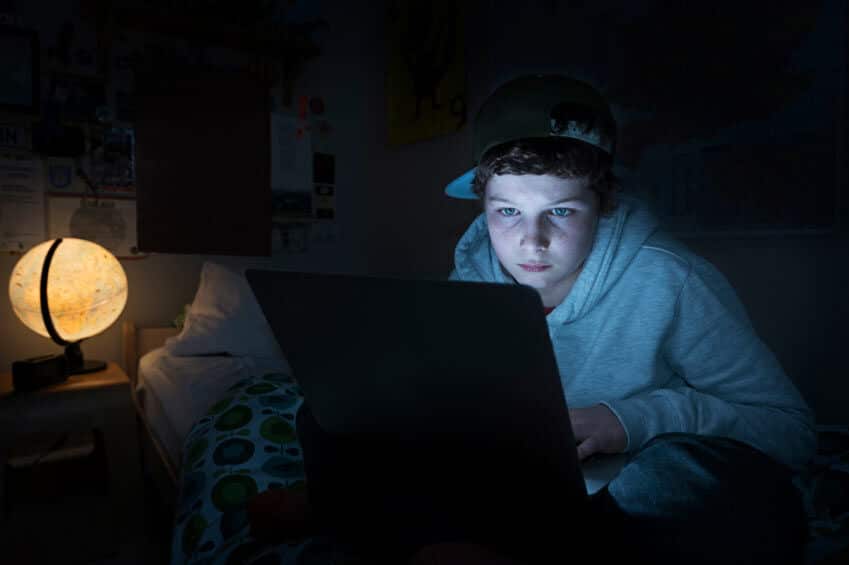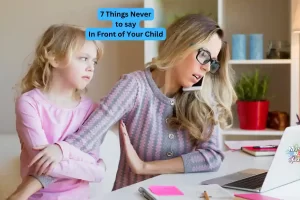Monitoring and Keeping Our Children Safe on Social Media Sites
Recently, a comprehensive study was performed by the American Academy of Pediatrics (AAP) on the impacts of social media on children and teens. It was concluded that individuals under the age of 18 benefit in numerous ways by utilizing social media website. Younger generations have the ability to increase their communication skills, have access to a multitude of facts and other types of information, and experience an increase in self-awareness; however, despite these benefits, it was determined that the interactions, activities, and information shared on social media platforms may also be detrimental to a child’s physiological, psychological, and emotional growth. Furthermore, social media platforms may result in dangers that negatively impact the safety of children and teenagers. As parents, it is our number 1 priority and responsibility to protect our kids; however, our power to do so should not be abused. In this comprehensive guide, you will be introduced to various tips that will aid in monitoring social media accounts, internet safety, and taking a productive, proactive role in protecting your children.
Social Networking – At a Glance
Before delving into the tips that will help you to successfully monitor your kids’ social media accounts, we feel it is important to share some basic information about social networking. These types of networks are those that provide a virtual-based community for people that have an interest in a particular activity, subject, or simply want to gather with one another in an online environment. Essentially, these networks are online clubhouses. You establish membership, create a profile, and engage in various types of activities and transactions. Social networking allows you to connect to relatives, friends, neighbors, classmates, and others through activities like games, chat, pictures, and email. All social networking websites include the ability to provide updates via status posts and typically host events. Examples of popular social networking websites for kids include Facebook, Twitter, Club Penguin, Webkinz, WhatsApp, Instagram, Pinterest, Burn Note, and Snapchat.
Why Do Kids Gravitate Towards Social Media?
There are several unique reasons why kids gravitate towards social media sites. First and foremost, these websites allow them to communicate with those that they care about in real life – even if those people are far away. If a kid has lost touch with a friend, they have the ability to relocate and reconnect with them. They may share messages with others, share various types of content (videos, memes, and informational text), and they may share pictures. They have the ability to participate in groups and causes that they are passionate about. They may also play games – solo, with their friends, or with people that they meet online. In today’s world, social media is a part of life – especially for kids. As parents, we must accept that this is a way of life for today’s children. Now, it is time to expound on how we may successfully monitor our kids’ social media accounts.
Ideas on How to Monitor our Kids Social Media Activities
-
- The first step to monitoring kids’ social media accounts and internet safety is to obtain information about the age restrictions on the various platforms. For example, if your child wants a Facebook account, the website requires them to be – at least – thirteen years of age. Naturally, you could change your child’s birth year in order to allow them access sooner than the designated minimum age; however, this is not advisable. If a social media website has an age restriction in place, you should respect that and encourage your children to wait until that age in order to create a member profile. If – when your child reaches the minimum age requirement – you feel as if they lack the maturity to interact on the social media site, you may have them wait for access. Also, you can block sites that are not suitable for your children with the help of your internet provider. Just let them know which sites you feel are not suitable for your kids and they will do the rest.
- The first step to monitoring kids’ social media accounts and internet safety is to obtain information about the age restrictions on the various platforms. For example, if your child wants a Facebook account, the website requires them to be – at least – thirteen years of age. Naturally, you could change your child’s birth year in order to allow them access sooner than the designated minimum age; however, this is not advisable. If a social media website has an age restriction in place, you should respect that and encourage your children to wait until that age in order to create a member profile. If – when your child reaches the minimum age requirement – you feel as if they lack the maturity to interact on the social media site, you may have them wait for access. Also, you can block sites that are not suitable for your children with the help of your internet provider. Just let them know which sites you feel are not suitable for your kids and they will do the rest.
- Once you have elected to allow your child access to a social media website, you should create a special email address and password that only you have access to. This will allow you to go into the account and monitor all activities, therein. When your child wants to engage on the website, you may either help them log in or you may save the log in information to the device in which they access their account for ease of access. This is a highly important internet safety measure.
- Once the account is set up, go in and check the security settings on the account. All settings should be placed on the strictest/highest levels. It is also critical to check the electronic device that your child uses to access the social media websites. You should make certain that all security settings are set on high on the device, too. Not only will this protect the device from malicious software threats – such as viruses and Trojans – but, it will protect unwanted intrusions from strangers that could intend to hurt your child.
- The next step to protecting your child online and monitoring their social media website usage is to elect to utilize filtering software programs. These specially-designed program suites will monitor all that your child does on the internet. In some instances, it will show keystrokes, websites visited, messages typed, messages received, and all aspects of their activities. Be sure to opt for programs that monitor social media use, scan messages, reads emails, and filters content that is deemed unacceptable for children. If your child is using a cell phone/smartphone device to access social media, you should opt for a filtering program that is designed for those devices.
- When monitoring your child’s activities, it is imperative that you set rules for social media usage. In fact, it is important that you set rules for internet usage, in general. For example, you should inform them that nothing is truly private. You cannot “take back” anything online, so, personal information should not be shared. They must understand that people may not be who they say they are on the internet and may intend to do them harm. They should know that seeing something inappropriate is not “bad” or “wrong”; however, it is their responsibility to inform you of such events. They should be encouraged to inform you if they are offended, bothered, upset, or made to feel uncomfortable about something online. Passwords, pictures, and videos should never be given out. If there is a desire to send pictures or videos online, parental permission should be first acquired.
- You should become familiar with the electronic device that your child is using to access the internet. You will want to determine how to access the cookies and the history on the device. You should check these on a regular basis in order to determine where your child has been online and what types of activities that they have been engaging in while on the World Wide Web.
- One of the best ways to monitor kids’ social media accounts is to ensure that the computer that they are using is kept in an open, accessible location in the home. If your kids are using smartphones, tablets, and similar devices to access the internet, they should be instructed to use these in open locations in the home while on the World Wide Web. While older kids may prefer the privacy of their own space, this is not advised.
- Pop-ups are highly attractive to kids. They may tell a child that they have won a prize, they are going to get something for free, or that there is a contest with an attractive reward. They may also want your kids to answer some questions. You should always tell your kids that these are false advertisements and that they should not fall for them. Pop-ups – by all accounts – are simply techniques used by internet marketers to obtain the personal information of internet users.
- If your child has a desire to post pictures online, you should either take them and monitor them or monitor pictures that you have not taken before they are allowed to post them. The content of the pictures should not contain any landmarks of the area in which you reside. Additionally, personal identifiable information should not be contained within the images. Your child should never be allowed to tag themselves in a picture until they are over the age of 18; even then, this act should be avoided in order to ensure personal safety.
- When monitoring your kids’ social media accounts, be on the lookout for signs of cyberbullying. If you find that your child is ill or upset after receiving a text, an instant message, or an email from someone online, they may be a victim of internet bullying. Many kids may start to stay at home and avoid leaving or start displaying unease when it comes to going to school. It is common for cyberbullying victims to withdraw from people around them. Many may start to access the internet at night, become frustrated when they are unable to use the internet, and use multiple accounts. If you notice any of these situations occurring, there may be a problem occurring.
In Summary….
Parenting is a difficult job. Parenting kids that use social media and regularly access the internet may prove to be even more challenging. The solution? To monitor your kids’ social media account and internet usage. In this guide, you have been presented with 10 tips that will not only ensure that your child is acting in a manner that is consistent with your rules and expectations, but, that your child is engaging in activities and transactions that are considered to be safe and beneficial to their psychological and emotional health. Remember, it is your responsibility to ensure your child’s safety, but, do it in a nurturing, caring, and loving way. Hopefully these 10 tips will help you do just that!















Add Comment